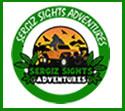Rwenzori Mountain Climbing
From $1,000
OVERVIEW
Have an early breakfast and transfer to Kasese with a lunch stop in Fort portal town. Arrive in Kasese in the Evening.Dinner and overnight stay at:
Drive Time: 8 to 10 Hours
ABOUT MOUNTAIN RWENZORI NATIONAL PARK
Rwenzori Mountains National Park is a Ugandan national park and UNESCO World Heritage Site located in the Rwenzori Mountains. Almost 1,000 km2 (386 sq mi) in size, the park has Africa's third highest mountain peak and many waterfalls, lakes, and glaciers. The park is known for its beautiful plant life.Rwenzori Mountains National Park was established in 1991. It was designated a UNESCO World Heritage Site in 1994 because of its outstanding natural beauty. Rebel militias occupied the Rwenzori Mountains from 1997 to June 2001. The park was inscribed on UNESCO's List of World Heritage in Danger between 1999 and 2004 because of insecurity and a lack of resources in the park.
Rwenzori Mountains National Park is located in south-western Uganda on the east side of the western (Albertine) African rift valley. It lies along Uganda's border with the Democratic Republic of the Congo (DRC) and borders the DRC's Virunga National Park, also a UNESCO World Heritage Site, for 50 km (31 mi). It is situated in the Bundibugyo, Kabarole, and Kasese districts, 25 km (16 mi) from the small town of Kasese. It is 996 square kilometres (385 sq mi) in size,[6] 70 percent of which exceeds an altitude of 2,500 metres (8,200 ft).
The park is 120 kilometres (75 mi) long and 48 kilometres (30 mi) wide.The park includes most of the centre and eastern half of the Rwenzori Mountains, a mountain range rising above dry plains located just north of the equator. Those mountains are higher than the Alps and are ice-capped. Mount Stanley is located in the park. Margherita Peak, one of Mount Stanley's twin summits, is Africa's third highest peak with a height of 5,109 metres (16,762 ft). Africa's fourth and fifth highest peaks (Mount Speke and Mount Baker) are also located in the park. The park has glaciers, snowfields, waterfalls, and lakes and is one of Africa's most beautiful mountain areas.
The park has many species that are endemic to the Albertine Rift system, and there are several endangered species in the park. It has a high diversity of plants and trees. The park is noted for its botany, which has been described as some of the most beautiful in the world. There are five distinct vegetation zones in the park, which change according to changes in altitude. The park has 89 species of birds, 15 species of butterfly, and four primate species. The park's wildlife varies with elevation, and its species include the forest elephant, chimpanzee, hyrax, black-and-white colobus, L'Hoest's monkeys, duiker, and Rwenzori turaco.
The park is owned by the Ugandan government through Uganda National Parks. It is protected, although extraction may be sanctioned by a board of trustees. Kasese, 437 km (260 mi) west of Uganda's capital Kampala, is the gateway to the park. The town has hotels and lodges, while the park has camping, a good trail network and huts for hikers. The park has trekking and climbing routes, several with unusual scenery.[citation needed] The most popular trek is a seven-day circuit of the park.
#villages#bird_watching#wild_game#primates #big_five#big_cats#natures_great_events#tailor_made#small_groups#
LOCATION
Gallery
Frequently Asked Questions
We strongly recommend bringing a backpack or duffel bag, as suitcases can be cumbersome and difficult to store in buses, under seats, etc.. Keep in mind that you will normally have to carry your own luggage on and off buses and trains and up and down hotel staircases. Suitcases with wheels may not work well on dirt or cobblestone roads.
Travelers arrive from all over the world to begin our tours and it is not possible to include international airfare in our prices. We would be happy to help you arrange flights. Just ask for an air quote when making your booking.
We always recommend packing as light as possible however the specific requirements for your tour will vary widely depending on where and when you are traveling. Our 'Trip Details' document includes a suggested packing list and these can be downloaded from each individual trip summary page. The checklist is tour specific and based upon the experience of our ground staff.
Requirements for travel visas vary widely depending on your nationality and your destination. Although we are unable to arrange visas on your behalf we have provided links on our “Resources” page to websites that will help you determine if visas are required. If you do require a visa you can arrange them yourself or use the services of a travel agent or visa processing company.
We keep our group sizes low so you have the freedom to move around and get involved with your surroundings, as well as more personal attention from our local guides. This intimate size ensures that your group will not crowd your experience. You can expect up to 15 travelers on a trip but the average is 10. Check individual trip pages for maximum group sizes.















